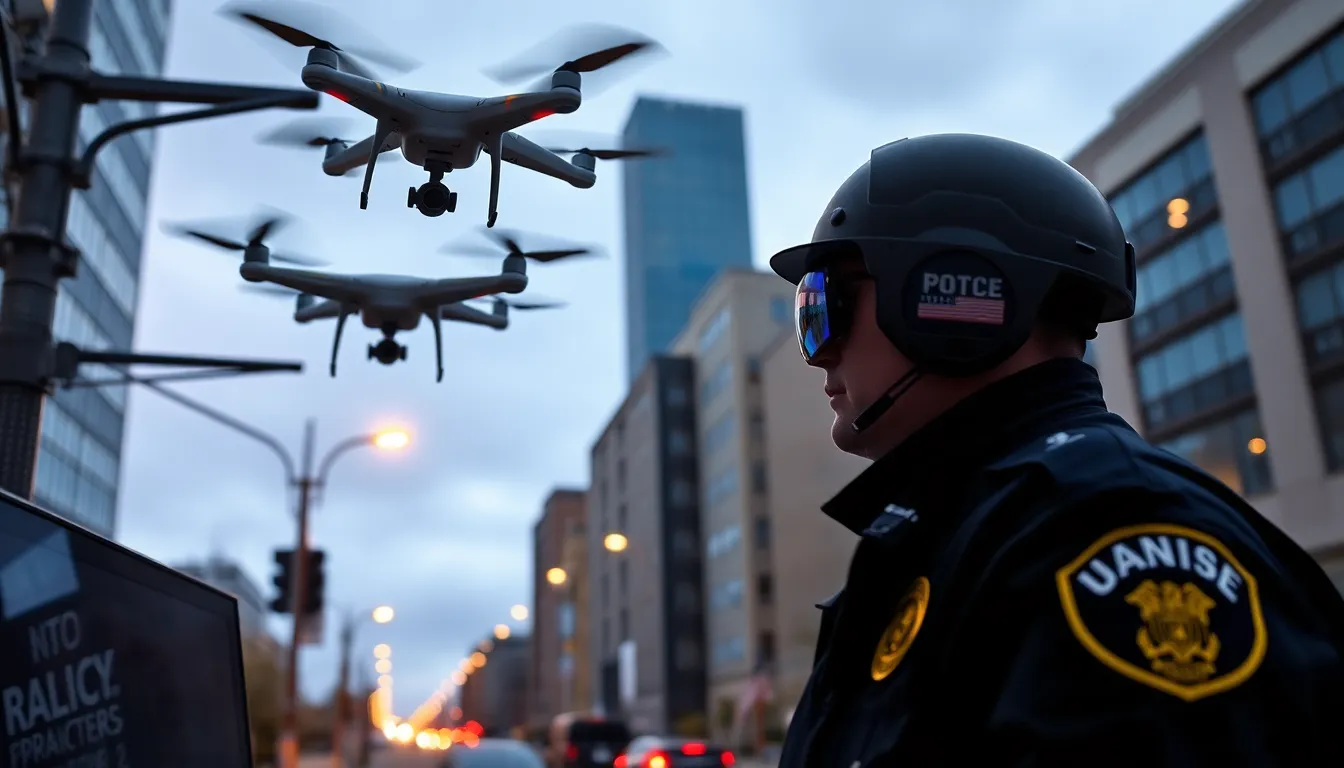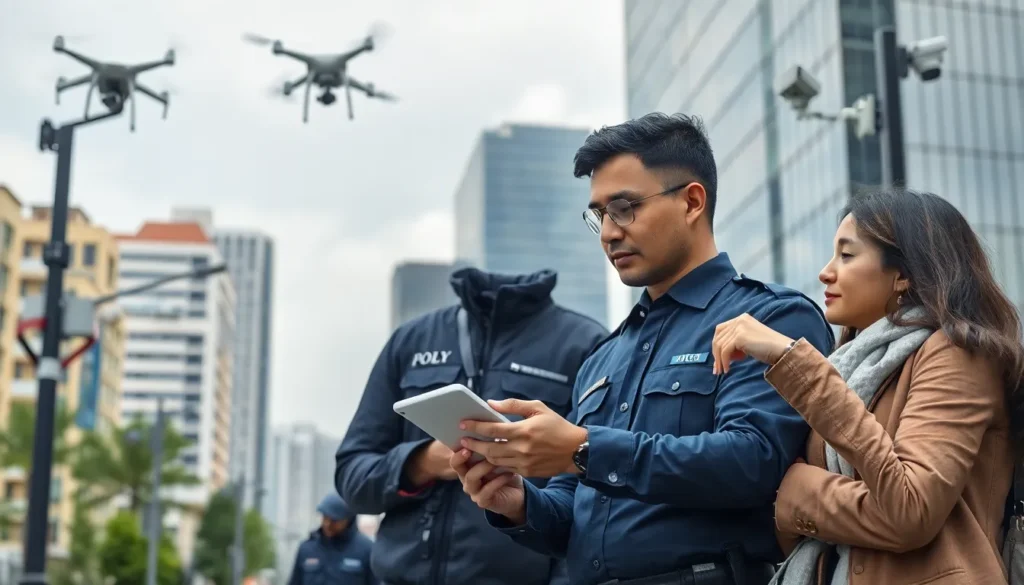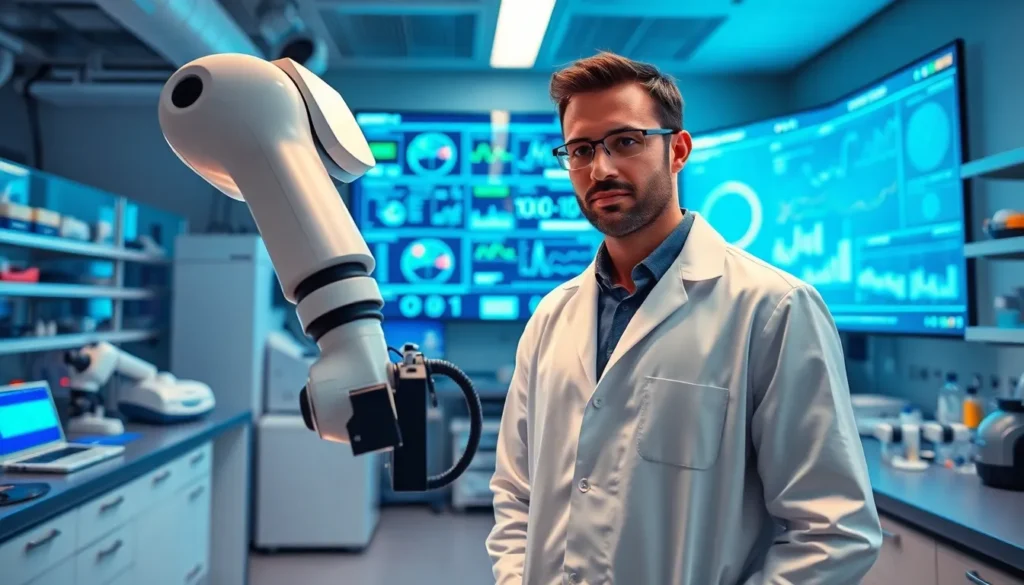Table of Contents
ToggleIn a world where technology seems to evolve faster than a speeding bullet, public safety is stepping up its game. Gone are the days when safety relied solely on good old-fashioned bravery and a trusty whistle. Today, it’s all about smart gadgets, data-driven strategies, and a sprinkle of artificial intelligence to keep communities safe and sound.
Imagine a world where your neighborhood watch is powered by drones, surveillance cameras have more brains than a college student, and emergency services can respond faster than you can say “help!” Technology-enhanced public safety isn’t just a futuristic dream; it’s a reality that’s making streets safer and lives easier. Buckle up as we dive into the exciting realm of tech-savvy safety solutions that are transforming how we protect ourselves and our communities.
Overview of Technology-Enhanced Public Safety
Technology-enhanced public safety represents a significant shift in how communities approach security and emergency management. Smart devices and systems are becoming essential for law enforcement and emergency services. These innovations include drones, which provide aerial surveillance for real-time situation assessment, and IoT devices that collect data to streamline response efforts.
Data-driven strategies improve decision-making capabilities. Predictive analytics can anticipate crime patterns, enabling law enforcement to allocate resources more effectively. Cameras equipped with facial recognition software enhance identification processes during investigations. Moreover, mobile applications allow citizens to report incidents promptly, fostering community engagement in safety initiatives.
Emergency services benefit from advanced communication tools. Integrated systems connect dispatch centers with first responders, facilitating immediate information sharing. Geographic information systems enable precise navigation and location tracking, reducing response times significantly.
Artificial intelligence plays a pivotal role in monitoring and analyzing vast amounts of data. Systems utilizing AI can detect anomalies, alerting authorities to potential threats in real-time. Communities are investing in smart streetlights that respond to unusual activities, further empowering local safety measures.
Overall, technology enhances public safety by providing tools that improve efficiency and responsiveness. Adopting these innovations creates safer environments, helping communities thrive amid evolving challenges. Prioritizing technological advancements in public safety solidifies a proactive approach to security in today’s increasingly complex landscape.
Key Technologies in Public Safety

Technology enhances public safety through innovative solutions that address various community needs. Key advancements include smart surveillance systems and drones, both significantly improving safety and response times.
Smart Surveillance Systems
Smart surveillance systems form the backbone of modern safety strategies. Advanced cameras equipped with high-definition imaging and facial recognition capabilities improve threat detection. These systems analyze video feeds in real-time, allowing law enforcement to respond quickly to incidents. Data collected aids in identifying crime trends and patterns, helping police allocate resources more effectively. Additionally, integrated communication tools enable seamless information sharing between agencies. Smart surveillance promotes proactive policing, which fosters community trust and deters criminal activity.
Drones for Emergency Response
Drones play a vital role in emergency response efforts by providing aerial perspectives of situations. Equipped with cameras, drones gather real-time data during crises, assisting first responders in assessing conditions quickly. Their ability to cover large areas efficiently allows for thorough surveillance in scenarios like natural disasters or search operations. Drones also deliver essential supplies, like medical kits, to hard-to-reach locations during emergencies. Moreover, they enhance situational awareness for command centers, leading to more informed decision-making while ensuring the safety of personnel on the ground.
Benefits of Technology-Enhanced Public Safety
Technology significantly enhances public safety by optimizing service efficiency and improving community engagement. Communities increasingly rely on innovative solutions to secure their environments and respond to emergencies swiftly.
Improved Response Times
Advanced communication tools facilitate instant connections between dispatch centers and first responders. These technologies enable real-time updates, allowing emergency personnel to navigate effectively and reach incidents more quickly. Utilizing geographic information systems, responders can optimize routes, minimizing delays that could potentially save lives. A 2022 report from the National Public Safety Association indicated that cities employing these technologies reduced emergency response times by up to 30%. Timely interventions drastically enhance the outcomes of emergencies, reinforcing the vital role of technology in public safety.
Enhanced Crime Prevention
Data-driven strategies contribute to proactive crime prevention methods. Predictive analytics help law enforcement anticipate crime patterns, enabling them to allocate resources more efficiently. Regular analysis of data collected through IoT devices further enhances situational awareness in communities. Community members actively engage through mobile applications, reporting suspicious activities and fostering collaboration with law enforcement. Reports show neighborhoods equipped with smart surveillance systems experience a 25% crime reduction on average. Integrating these technologies creates safer environments and empowers communities to take charge of their safety.
Challenges and Considerations
Technology-enhanced public safety brings various challenges and considerations. Addressing these issues is crucial for successful implementation and community trust.
Privacy Concerns
Privacy concerns arise with the deployment of surveillance technologies. Citizens often worry that increased monitoring infringes on personal freedoms. Data collection practices related to facial recognition and tracking raise ethical questions regarding consent. Transparency about how data is used and stored remains paramount for maintaining public trust. Established guidelines must ensure that personal information remains protected while benefiting community safety.
Implementation Costs
Implementation costs can create barriers for municipalities. Initial investments in advanced technology, like drones or smart surveillance systems, often require substantial funds. Upfront expenditures can strain budgets, especially for smaller communities. Long-term maintenance and training also contribute to overall financial commitments. Stakeholders must evaluate the cost-benefit analysis of adopting these innovations to determine their sustainable impact on public safety.
Technology-enhanced public safety is reshaping how communities approach security and emergency management. By leveraging innovations like drones and smart surveillance systems, neighborhoods can create safer environments and foster community engagement. The integration of advanced communication tools further streamlines emergency responses, allowing first responders to act swiftly and efficiently.
While the benefits are significant, challenges such as privacy concerns and implementation costs must be thoughtfully addressed. Balancing the advantages of technological advancements with ethical considerations is crucial for maintaining public trust. As communities navigate this evolving landscape, the focus remains on creating a safer future where technology and public safety work hand in hand.




